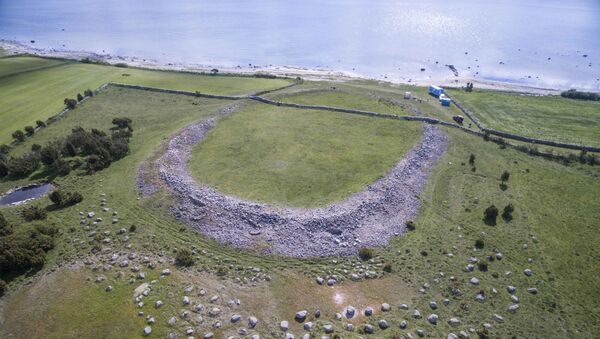Archaeologists from Kalmar County Museum in Sweden have found evidence of carnage that unfolded in the 5th century on the Swedish island of Öland in the Baltic Sea. The invaluable material that sheds the light on the collapse of the Roman Empire has been summarized in a scientific article called "A Frozen Moment."
The massacre played out in the coastal town of Sandy Borg about 1,500 years ago, inhabitants were attacked and killed in their homes or while trying to flee for their lives. The excavation showed that an old man was beaten so savagely in his head that he fell into an open fire in his home, whereupon his body burned down to the bone.
At the present moment, 26 bodies have been unearthed, all age groups represented, from infants and young children to older adults — but no weapons. Archaeologists wonder whether the assassins may have taken them as trophies. At the same time, the excavations indicated that the bodies and the valuables including jewelry and Roman gold coins were left behind. No one returned to the place after the massacre, neither to give the dead a proper burial or to retrieve the things left behind.
READ MORE: Medieval Ruins of 'Finnish Pompei' Unearthed From Under Gym Floor (PHOTOS)
The extent of the excavation is huge. Archaeologists have been working on the dig for three years, but only think they've excavated about 10 percent of what is buried under the grass. So far, five deposits of exquisite jewelry, including brooches, beads and cowrie shells, have been discovered hidden in different houses within the central block of the fort.
New blog post with VR-view of the excavation is up on our brand new site https://t.co/aGKkFacP30! pic.twitter.com/Q6GR5D9jCg
— Sandby Borg (@sandbyborg) June 20, 2016
Although the carnage has not been mentioned in the ancient Swedish chronicles, local legends have always called Sandby Borg as a dangerous place, according to Ludwig Papmehl-Dufay of the archaelogical team.
"I think it is most likely that it has been remembered and brought on by means of oral reports throughout generations," Papmehl-Dufay ventured.
You can now enjoy a virtual walk through Sandby Borg, thanks to @esrisverige @Esri @EsriUC https://t.co/aGKkFacP30 pic.twitter.com/ALlFE0ypv6
— Sandby Borg (@sandbyborg) June 27, 2016
So far, it remains unknown what forces were behind the massacre at Sandby Borg. However, the carnage coincided with the early Migration Period (400-550 AD) following the steady decline and the ultimate collapse of the Western Roman Empire around 475 AD. Earlier this year, a 1,500-year old onion discovered at Sandby Borg strengthened the hypothesis of the inhabitants' close contacts with the Romans.
The ringfort of Sandby Borg is located adjacent to the shoreline on south-east Öland and consists today of an eroded oval stone wall with three gates visible as shallow depressions in the wall. The wall would originally have been 4-5 meters high.
Öland, nick-named "the island of sun and winds" was known in Latin as Oelandia. It is Sweden's second-largest island after Gotland. With an area of 1,342 square kilometers and a population of 26,000 inhabitants, Öland is the smallest of Sweden's traditional provinces. It is separated from the Swedish mainland by the Kalmar Straight and is connected to it by the 6-kilometer Öland Bridge.
End of world, end of time.⠀
— Shooting Wild (@shooting_wild) April 17, 2018
⠀#weroamsweden #öland #sweden #fujifilm_xseries ⠀ https://t.co/qScgOWzPHy pic.twitter.com/ji0vdhEF5f


